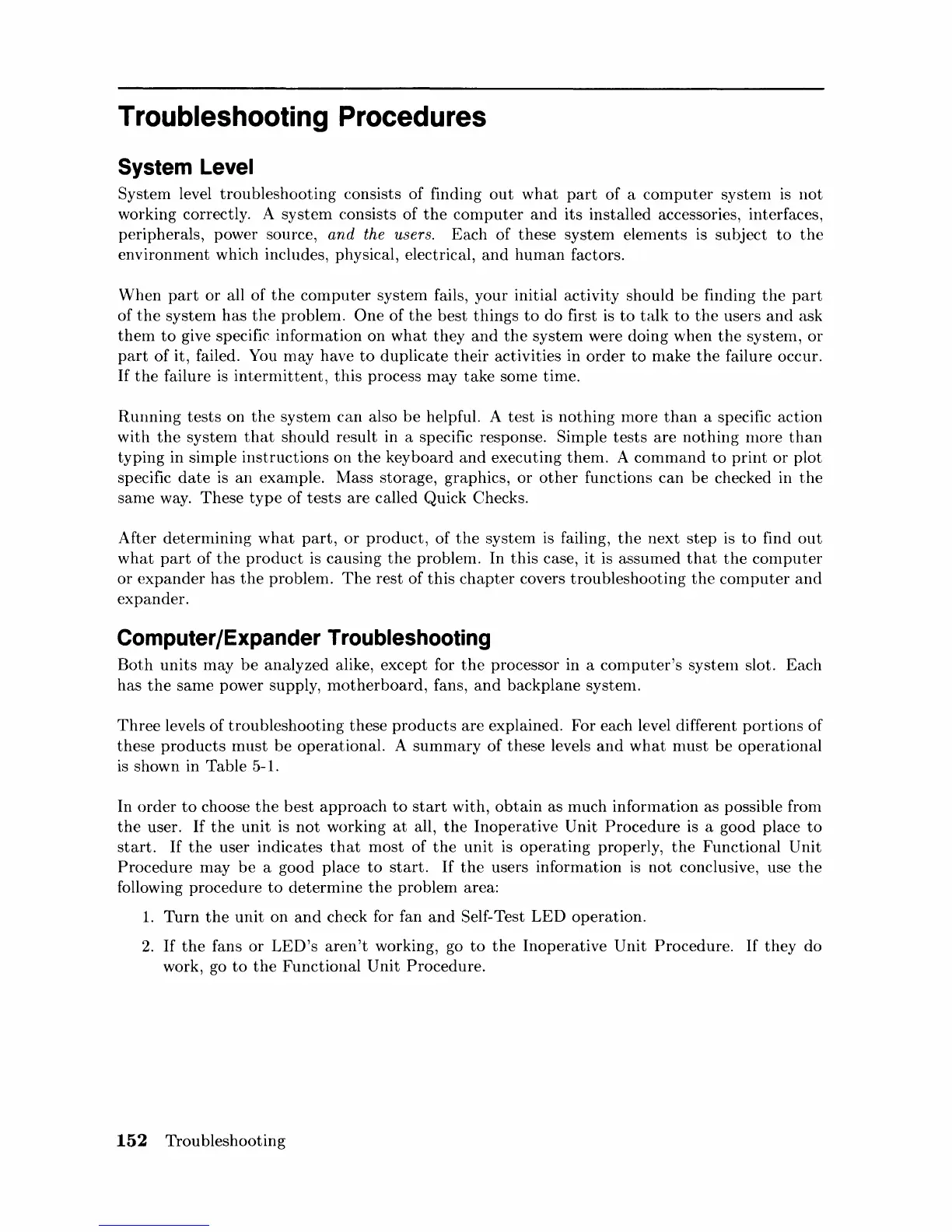Troubleshooting Procedures
System Level
System level
troubleshooting
consists of finding
out
what
part
of a
computer
system
is
not
working correctly. A
system
consists of
the
computer
and
its installed accessories, interfaces,
peripherals, power source,
and
the users. Each of these system elements
is
subject
to
the
environment which includes, physical, electrical,
and
human
factors.
When
part
or
all of
the
computer
system fails, your initial activity should
be
finding
the
part
of
the
system
has
the
problem.
One
of
the
best
things
to
do first
is
to
talk
to
the
users
and
ask
them
to
give specific. information on
what
they
and
the
system were doing when
the
system,
or
part
of
it, failed. You may have
to
duplicate
their
activities in
order
to make
the
failure occur.
If
the
failure
is
intermittent,
this
process may
take
some time.
Running
tests
on
the
system
can
also
be
helpful. A
test
is
nothing
more
than
a specific action
with
the
system
that
should result in a specific response. Simple
tests
are
nothing more
than
typing
in simple
instructions
on
the
keyboard
and
executing
them.
A
command
to
print
or
plot
specific
date
is
an
example. Mass storage, graphics,
or
other
functions
can
be
checked in
the
same way.
These
type
of
tests
are called Quick Checks.
After determining
what
part,
or
product,
of
the
system
is
failing,
the
next
step
is
to
find
out
what
part
of
the
product
is causing
the
problem. In
this
case, it is assumed
that
the
cOInputer
or
expander
has
the
problem.
The
rest
of
this
chapter
covers troubleshooting
the
computer
and
expander.
Computer/Expander Troubleshooting
Both
units
may
be
analyzed alike, except for
the
processor in a
computer's
system slot. Each
has
the
same power supply,
motherboard,
fans,
and
backplane system.
Three
levels of
troubleshooting
these
products
are explained. For each level different portions of
these
products
must
be
operational. A
summary
of
these levels
and
what
must
be
operational
is
shown in Table 5-1.
In
order
to
choose
the
best
approach
to
start
with,
obtain
as much information as possible from
the
user.
If
the
unit
is
not
working
at
all,
the
Inoperative
Unit
Procedure
is a good place
to
start.
If
the
user indicates
that
most
of
the
unit
is
operating
properly,
the
Functional Unit
Procedure
may
be
a good place
to
start.
If
the
users information
is
not conclusive, use
the
following procedure
to
determine
the
problem area:
1.
Turn
the
unit
on
and
check for fan
and
Self-Test
LED
operation.
2.
If
the
fans
or
LED's
aren't
working, go
to
the
Inoperative Unit
Procedure.
If
they
do
work, go
to
the
Functional
Unit
Procedure.
152
Troubleshooting

